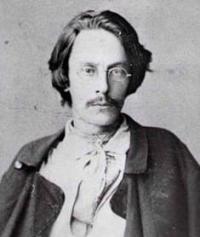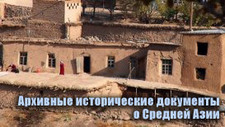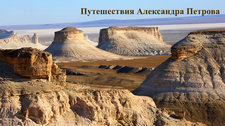Вы здесь
Konshin on Botovsko-Kuyandinsk Fair.

Kuyandinsk picket near Taldy River.
"These figures, according to those familiar with the fair, are significantly lower than the actual figures. As can be seen from the data provided, the fair serves as a venue for the exchange of Kyrgyz livestock and livestock products primarily for products from factories and plants in European Russia. Participating in this exchange are the Kyrgyz (from Karkaraly, Semirechye, and others), and merchants from the Steppe region, Turkestan, Tobolsk province, and even from European Russia. The Botovsko-Kuyandinsk Fair is of particular importance for Semirechye, from where a large number of livestock are brought and almost all the grain is imported."
N. Ya. Konshin. "From Pavlodar to Karkaraly." 1901.
XIXth-century fairs in Kazakhstan and Central Asia.
The fair near the Kuyandinsky picket (I received most of the information below about the fair from Mr. Benkevich, a Karkaralinsk veterinarian whose extensive assistance I also enjoyed during my travels around Karkaralinsk. For the Botovsky Fair, see Mr. Benkevich's articles in issues 23 - 24 of the unofficial section of the Semipalatinsk Regional Gazette for 1898 and Mr. Mayevsky's in the Commemorative Book of the Semipalatinsk Region for 1897) takes place annually between May 25 and June 25.
The fair buildings, in four long rows, are located on a plain bordered to the north by the Taldy River. The two main rows form a wide street, at the beginning of which stands a small church. Here are concentrated some very fine buildings, where during fair seasons, representatives of A. I. Derov (from Pavlodar), the Volkov brothers (from Omsk), Vysotsky, and other larger merchants trade, primarily in manufactured goods.
Their shops are on the right side of the street, while on the left are tea stalls, temporary offices of transport companies, and the like. The further one gets from the post road, the worse the buildings on the street become. Four wells are located in the middle of the street, and right next to one of them, a small fire engine is stationed.
Next to these main rows is the "Tashkent" row, where merchants from Turkestan, mostly Sarts, sell various Central Asian goods (calico, silk fabrics, carpets, dried fruits, etc.) in small shops. There's also a warehouse of Singer sewing machines, which are very popular with the Kyrgyz, a shop selling Chinese goods, a Muslim prayer house, and the warehouse and office of the largest buyer of Kyrgyz dzhebagi - the Zlokazov Brothers Trading House (from Semipalatinsk).
Even worse are the buildings in the so-called "glutton row," where kumys sellers, sellers of tukachi (a specially prepared Tatar bread), and other food items, various artisans, and two bathhouses are housed.
The streets, especially to the east and south, are lined with yurts during fair season. At the end of the main street, the yurts are occupied primarily by buyers of Kyrgyz raw materials; at the end of Tashkent row, by the sheep buyers: their yurts are surrounded by small pens; Then, the Petropavlovsk Tatars and various carters settle in camps, and a horse market occupies a special place with a flag. Finally, mention should be made of the yurts with red flags, which, I've been told, bear inscriptions in white letters in Russian and Kyrgyz:
"Lawyer,"
"Writing petitions," and so on.
These yurts house various unlicensed "lawyers" from Semipalatinsk, and they are said to do a good job selling scraps of their knowledge, gleaned in the chambers of justices of the peace. One such "lawyer" once decided to decorate his yurt with an enticing sign like "No more lost cases," but his worthy colleagues protested against such overly garish advertising...
Even if it's not true, it's well thought out, as the saying goes. At the end of the shopping arcades, along the post road, is the "official quarter," where a branch of the State Bank, the post office, veterinarians, police, and other officials are housed in special buildings during the fair.
Behind this quarter are the "khokhly" (individuals) from Semirechye with their oxen and carts, sometimes numbering in the thousands, mostly carrying flour. The fair is traditionally most lively on June 2 - 3 and 15 - 20. By these times, a crowd of Kyrgyz from Karkaraly and adjacent districts has gathered at the fair: yurts are pitched wherever possible; visitors, on foot or on horseback, fill the fairgrounds, raising clouds of dust...
On such days, according to eyewitnesses, the fair takes on a very unique appearance. In the Tashkent row Brightly colored oriental fabrics are displayed, colorful carpets are vibrant, and sacks of dried apricots, raisins, and the like beckon to the unpretentious nomad.
The stalls are positively filled with Kyrgyz, who buy each item en masse, taking turns examining and touching each piece of calico, animatedly chatting with one another. In the wholesale shops, goods are often bought by Kyrgyz people in groups and then remarkably skillfully divided according to each person's share of the total amount paid.
Even more bustling and crowded are those areas of the fair where thousands of head of various livestock are bought and sold. Trade at the fair continues from early morning until late evening, weekdays and holidays, without any breaks. But at night, it is completely quiet, probably due to the absence of taverns, bars, and other "entertainment" establishments at the fair.
The Kuyandinskaya Fair originated in the late 1940s. Its founder was the Yalutorovsk merchant V. I. Botov, after whom the fair is named Botovskaya. Currently, the fair's annual turnover reaches several million rubles. According to official data, in 1899, various goods worth 1,731,708 rubles were sold at the fair, including livestock (primarily sheep) worth 638,965 rubles, various Kyrgyz livestock products worth 234,733 rubles, manufactured goods, groceries, and other imported goods worth 754,000 rubles, tanned leather worth 54,600 rubles, Central Asian goods worth 25,200 rubles, flour and grain of all kinds worth 16,210 rubles, and other goods worth 8,000 rubles.
These figures, according to those familiar with the fair, are significantly lower than the actual figures. As can be seen from the data provided, the fair serves as a venue for the exchange of Kyrgyz livestock and livestock products primarily for products from factories and plants in European Russia.
Participating in this exchange are, on the one hand, the Kyrgyz (from Karkaraly, Semirechye, and others), and, on the other, merchants from the Steppe Region, Turkestan, Tobolsk Province, and even from European Russia. The Botovskaya Fair is especially significant for Semirechye, from where a large number of livestock are brought and almost all the grain is imported.
In particular, for the average resident of Karkaraly (from Karkaraly to the Kuyandinsky picket, 52 ver.), the fair is a real event: there you can buy many things much cheaper than in the city, find work, and finally, have fun. Until recently, it was also where merchants settled various scores among themselves and with the Kyrgyz.
Long before the fair, timber is transported from Karkaralinsk to Kuyandy for the construction of new shops and the renovation of old ones. Various workers and artisans, including a large number of Jataki, migrate there. Some of the latter engage in various menial tasks, others sell meat, kumiss, baursaks, and the like at the fair.
The majority, however, "alypsatarnichaet" (alypsatar in Kyrgyz means a reseller, a huckster), that is, they buy livestock from the steppe Kyrgyz and immediately resell them, but mainly various raw materials. According to Mr. Benkevich, who shared information with me about the Botovskaya Fair, at least 75% of all raw materials purchased at the fair first fall into the hands of alypsatars, who scurry about both at the fair itself and in the Kyrgyz villages.
Local Kyrgyz earn some income from delivering yurts for visitors: depending on the value and size of the yurts, they are rented out for the duration of the fair for 4 - 25 rubles. There are no hotels or other accommodations in Kuyandy. Clerks and traders who own their own shops usually live in them, while others are forced to rent Kyrgyz yurts.
For residents of Karkaraly, the quantity and price of flour at the fair is of particular importance. Flour is brought primarily from Semirechye by peasant settlers. There are no settled settlements in the Karkaraly district, other than Karkaraly itself, and among the local Kyrgyz, with the exception of a few places, agriculture is only just beginning to develop.
In 1900, the price of wheat flour at the fair ranged from 1 ruble 5 kopecks to 1 ruble 20 kopecks per pood.





Authority:
N. Ya. Konshin. "From Pavlodar to Karkaralinsk." Travel Sketches. A Commemorative Book of Semipalatinsk Region for 1901. Semipalatinsk, 1901.
https://rus-turk.livejournal.com/749123.html







